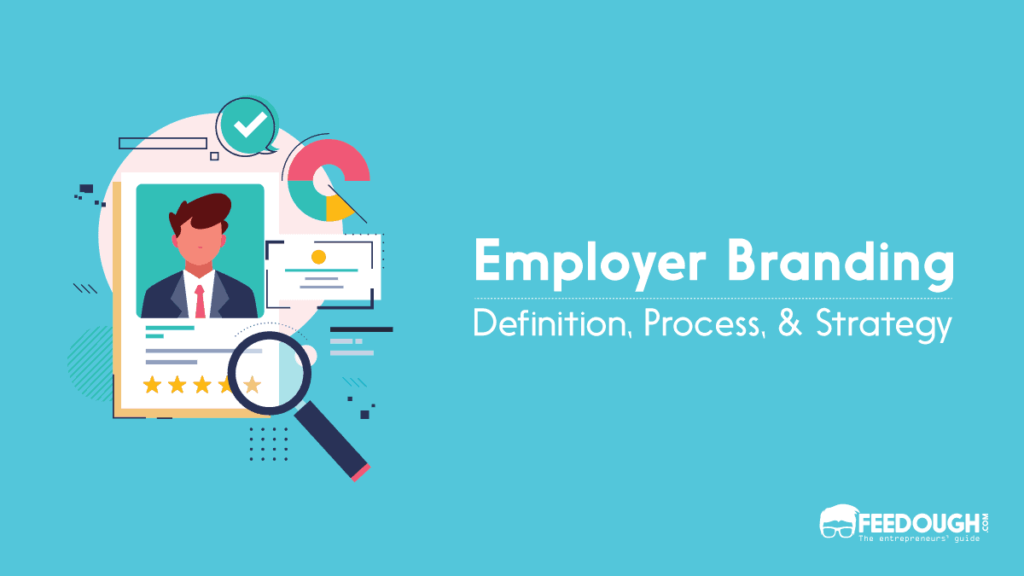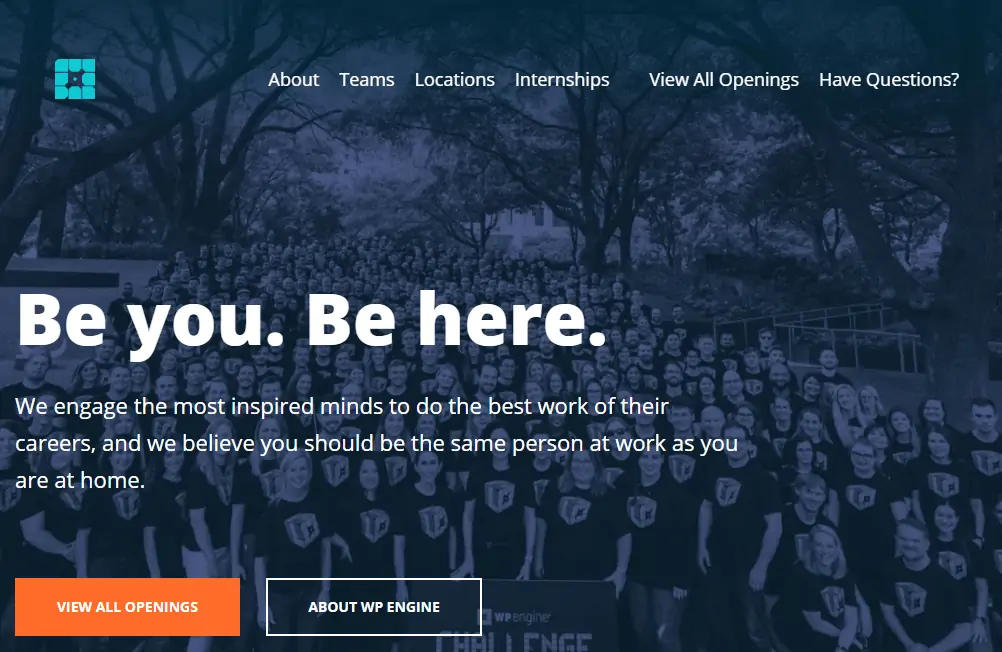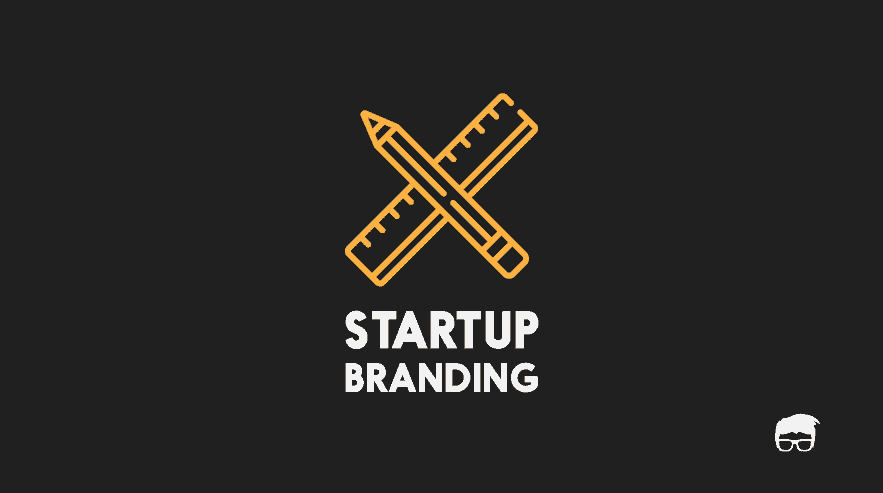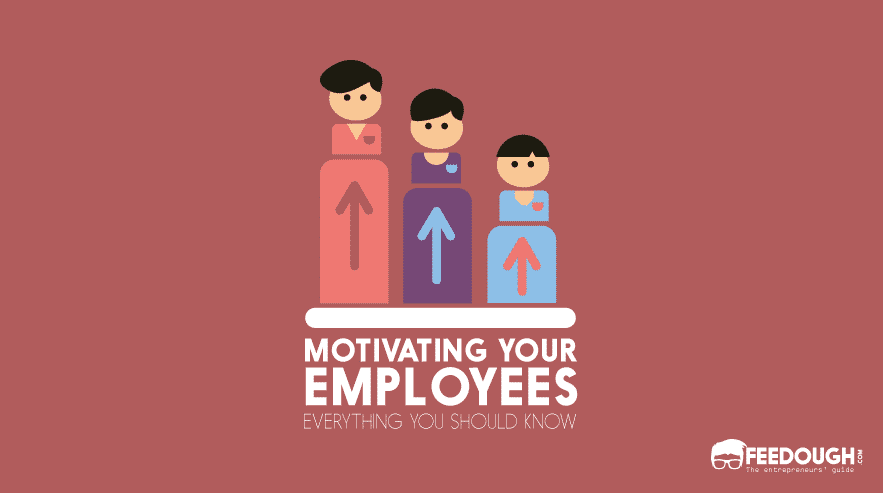Jeff Bezos once said, “Your brand is what people say about you when you’re not in the room”.
Scary, right?
How do you control what people say behind your back? How do you ensure that the walls whisper what you want them to? The answer is branding. Or, in our case, employer branding.
In today’s competitive job market, it’s the candidate who gets to pick the company and not the other way around. Faced with this reality, employers need to build a close-knit strategy to influence their employer brand positively.
Building an employer branding strategy that perfectly suits your company’s needs can be overwhelming. And without proper guidance, you will probably cost your company its time, money, resources and employees.
But worry not! We have got you covered.
Dive in to clear all your doubts about employer branding and build a strategy of your own.
What Is Employer Branding?
Employer branding is process of developing a brand identity of a company as an employer that helps it to be recognised and differentiated in the job market.
The employer brand of a company is how the market perceives an organisation as an employer. In other words, it is a company’s brand image or reputation as a workplace. Every company has a particular image as an employer, and therefore, every company has an employer brand.
If you want to attract quality candidates for your company, it is crucial to have a positive employer brand. Thus, an employer brand needs nurturing regularly, and that is where employer branding enters the picture. Employer branding is the process of shaping a company’s employer brand. It is the process of building and cultivating your reputation as a workplace or an employer. It entails everything you do to make your company a desirable place to work and attract talented job seekers.
Why Is Employer Branding Important?
According to 59% of employers, employer branding is one of the most critical components of a company’s HR strategy. But why is it so? Why is it essential for your company to invest its valuable time and resources into employer branding? Why is it crucial to manage and influence employees’ and candidates’ opinions about your company?
It is because today’s job market is majorly candidate-driven rather than employer-driven. In such a competitive market, a company cannot expect to attract desired candidates without having a proper working environment and a positive reputation. 95% of candidates consider a company’s reputation before applying. Therefore, if you want to hire and retain talented employees, building a strong employer brand is highly recommended. Moreover, your employer brand reflects your company’s work culture, core values, and the message you want to put out in the world. So, without a positive employer brand, your company could lose a lot more than job applications.
But first, let’s take a look at the benefits of having a strong employer brand:
- Talent Acquisition: The most significant perk of having a positive employer brand is talent attraction. As it is, recruiters are having a hard time finding the right candidates for their companies. But with a positive employer brand, your company could receive up to twice as many job applications, dramatically improving the recruiting process. On the contrary, if a company has an unfavourable reputation, it can be ten times harder to find talented candidates. 69% of candidates wouldn’t work for such a company even if they are unemployed!
- Return of Investment (ROI): Many recruiters and employers feel that employer branding demands a considerable investment in terms of time, money, and other resources. But the return of investment of employer branding is much more significant as compared to the money spent. According to research, recruiting costs drop by 43% when a company enjoys a good reputation as a workplace. At the same time, companies that do not invest in their employer brand are forced to spend an average of $5000 per employee. So, the choice is yours, whether you want to invest in your employer brand or drain exorbitant amounts while trying to recruit perfect candidates.
- Employee satisfaction and retention: Employer branding not only helps attract better candidates but also helps in retaining current employees. It is because as you build your employer brand, you also improve your company’s work culture. When you listen and understand your employees, you make them happy, which improves your company’s overall performance. Companies with a strong employer brand have reported increased performance as they saw a 20% increase in revenues and 12% growth in the workforce.
How To Develop An Employer Branding Strategy?
An ideal employer branding strategy can be divided into six simple steps. Here’s how you can develop an ideal employer branding strategy for your organisation.
Step 1: Audit Your Employer Brand
To improve or manage your employer brand, you first need to know your current position. So, the first step in your employer branding strategy should be to research and analyse your company as a workplace thoroughly. This analysis is a two-step process in itself:
- Internal analysis: This step encompasses analysing what your current employees think about your company.
- Analyse the internal communications, performance reviews, employee reviews, retention rate, employee satisfaction, employee engagement, the perks your company offers, KPIs (Key Performance Indicators), etc.
- Conduct surveys or interviews. While conducting interviews or surveys, it is important to ask relevant questions to collect meaningful information that would help determine how employees feel about the company. Some questions could be:
- How would you describe the company to someone not familiar with us?
- How do you think the company could improve as a workplace?
- Do you relate to the mission of our organisation?
- Would you recommend the company to one of your acquaintances?
- If given a chance, would you apply for a job at the company again?
2. External analysis: Next, it is time to analyse your company’s reputation with prospective employees or candidates. This analysis could include examining your social media profiles, career page, job description, the time you take to respond to applications, how you conduct selection interviews, acceptance/rejection letters, etc. Moreover, you can review the application rate, source of hire, and your company’s overall social media presence. You need to carefully review and analyse each and every touchpoint a prospective candidate has with your company.
The audit will help you identify what is going well at your company and what needs to be improved. The audit will also help you see the difference between your identity (how a company demonstrates itself) and your image (how your company is perceived) as an employer. Once you know what your candidates and employees think of you as an employer, you can easily improve and build a robust employer brand.
Step 2: Define Your Goals
The next step is to define the company’s goals clearly. It is important to keep your goals in mind from the beginning itself to build a strategy suitable to your company’s needs. It is advisable to keep the goals precise, time-bound, and realistic to avoid any confusion. Some sample goals could be:
- Increase the number of job applications by 30% within six months
- Increase employee retention rate by 50% by the end of the year
- Increase the number of people who visit the career page
- Maintain a positive online reputation on employer-related and jobs-search websites.
Step 3: Define Your Candidate Persona
To attract the desired candidates, you first need to define the kind of candidates you desire. It is crucial to define a candidate persona for each role because you need to understand your audience to tailor your efforts according to their interests.
Some points to keep in mind while developing a persona could be:
- Average age group
- What would motivate such a candidate?
- What would be the best platforms to connect with the candidate?
- What is the candidate looking to achieve at your company?
- What are the common personality traits of this candidate persona?
- What perks, benefits or team culture attract this persona?
- What are their skills, geographical location, and online presence?
Step 4: Define Your Employee Value Proposition
After completing all the research and acknowledging your company’s current position, goals, and target candidates, the subsequent step is to draft the company’s employee value proposition.
An employee value proposition is a statement that answers questions such as:
- Why should a candidate work for your company?
- What benefits will an employee receive in return for the skills and experience he brings to the company?
- What growth opportunities can you offer your employees as an employer?
An EVP describes the unique benefits that a company offers to its employees. It encompasses what a candidate will receive from the organisation in return for his skills and commitment to the company.
Think of your EVP as the soul of your organisation. An EVP describes what a company stands for and what are its core values. But the EVP should not be limited to the perks and benefits that the company offers. Instead, it should motivate people to work for your company, something that your employees can relate to.
The next question you might ask is how you can create an effective employee value proposition?
As you have already completed your brand audit and research, you already know and understand your audience. You know what your employees expect of you, what inspires them the most, what they like about the workplace, and what they don’t. The next step is to analyse and utilise this information to draft an EVP.
Here are some sample EVPs to get you started:
PwC

PwC’s EVP clearly defines what the employee can expect to achieve at the company and what they expect in return. Also, the EVP is unique and customised according to the company’s goal and mission
Bain & Company

Bain & Company’s career page: “Picture yourself at one of the world’s best places to work, surrounded by teams and people who challenge you, support you, and inspire you to be extraordinary.”
The company’s EVP highlights the great work culture, supportive environment, and other perks their employees enjoy while stating what the company expects in return.
Step 5: Develop Your Employer Branding Strategy
The first four steps lay the groundwork for your employer branding strategy. After the foundation is set, you should be ready to develop a strategy that suits your company’s needs and goals. The candidate personas will help you target the right audience, and your EVP, mission statement, and core values will help you develop the content strategy.
- Start by enhancing your company’s work culture, perks, and benefits. Your employer brand is essentially the mirror image of your work culture. Therefore, you cannot develop a positive employer brand without a strong company culture.
Although employer branding is not limited to salary and benefits, they play a huge role in attracting top candidates. So it is recommended to analyse and review the perks and benefits you offer to your employees and candidates. According to Glassdoor, candidates find it frustrating when companies do not share information about the perks and benefits that come with the job. So it is recommended to communicate such information to the candidates clearly. - Implement your recruitment marketing strategy. Recruitment marketing is a component of employer branding where a company attracts candidates using marketing strategies. In today’s candidate-driven job market, candidates find employers in about the same way customers find products. Because of these similarities between candidate and consumer behaviour, recruitment marketing and brand marketing have many commonalities. Thus you can collaborate with your marketing team to develop and implement an effective recruitment marketing strategy.
Here is an example of a very interesting recruitment marketing campaign by a German company, jobsintown.de:
The company creatively designed stickers with the slogan “life is too short for the wrong job”. These stickers depicted people working hard doing meaningless tasks in cramped spaces. - Develop a content strategy. The company’s first interaction with a prospective candidate will be through the content displayed on your career page, job description, social media profiles, etc. So it is advised to develop a content strategy and a content calendar to regularly review, test, and update your content.
Step 6: Implement Your Employer Branding Strategy
The last and the most important step in the employer branding process is to take your message to the masses. There are numerous channels through which you may advertise your employer brand:
- Social Media: 62% of the candidates evaluate a company through its social media presence, and 80% of candidates look for jobs on social media. Therefore, it is highly recommended to have a splendid social media presence so that you can attract top candidates and increase your application rate.
You can look at Unilever’s #AskaVPatUnilever campaign, where they engaged their executives in their employer branding strategy, allowing them to give advice and answer questions for candidates. - Job Descriptions: Job descriptions are often the first point of contact candidates will have with your company. It is important to have a clear and concise job description that reflects your employer brand accurately. While crafting a job description, we highly recommend that you clearly mention the job title, a brief mission statement, role summary, job function, skills required, compensation, location, and working conditions. Besides that, the application process should be simple and easy to follow.
- Career Page: The next and the most important touchpoint with potential candidates is the company’s career page. The career page can significantly enhance the company’s image in the minds of potential candidates. Hence it should creatively reflect all that your company stands for. The design, the content, the videos, and everything else on your career page should be carefully crafted, keeping your goals and candidates in mind.
For example, the WP Engine‘s career page is well designed and highlights all the aspects of the organisation while keeping it simple. - Employee Advocacy: Employees are the biggest strength of a company in the employer branding process. For the prospective candidates, employees are like a window into the actual culture of an organisation. Therefore it is highly recommended to get your employees engaged into the employer branding process. This can be done by encouraging your workers to maintain their online profiles, or by asking them to write blogs about the company’s work culture or make interactive videos on features like ‘a day in life’ or ‘why I applied at this company’.
You can take a look at Microsoft’s job blogs or Google’s employer branding videos for your reference.
Besides this, the company should focus on rewarding the employees for their efforts and keeping them satisfied. It’s also advisable to be genuine, since this will help to develop and empower your employer brand.
Go On, Tell Us What You Think!
Did we miss something? Come on! Tell us what you think about our article on employer branding in the comments section.
An enthusiastic human being with determination and zeal to explore new ventures. Tanya is an entrepreneurial spirit searching for changes and learning to exploit them as opportunities and impacting people for good.





![What Is Brand Strategy & How To Develop One? [Ultimate Guide] BRAND STRATEGY](https://www.feedough.com/wp-content/uploads/2019/11/BRAND-STRATEGY.webp)






